Xinhua Headlines: China's Chang'e-6 lands on moon's far side to collect samples
* The Chang'e-6 mission is tasked with collecting and returning samples from the moon's far side, the first endeavor of its kind in the history of human lunar exploration.
* After the landing, the probe is scheduled to complete sampling within two days. It has adopted two methods of moon sampling, which include using a drill to collect subsurface samples and grabbing samples on the surface with a robotic arm.
* Chinese scientists will share scientific data generated by the mission with their international partners and carry out joint research, and access to the Chang'e-6 samples will open for international applications at a later stage.
BEIJING, June 2 (Xinhua) -- China's Chang'e-6 touched down on the far side of the moon on Sunday morning, and will collect samples from this rarely explored terrain for the first time in human history, the China National Space Administration (CNSA) announced.
Supported by the Queqiao-2 relay satellite, the lander-ascender combination of the Chang'e-6 probe successfully landed at the designated landing area at 6:23 a.m. (Beijing Time) in the South Pole-Aitken (SPA) Basin.
Chang'e-6 consists of an orbiter, a returner, a lander and an ascender. Since its launch on May 3 this year, it has gone through various stages such as Earth-moon transfer, near-moon braking, lunar orbiting and landing descent. The lander-ascender combination separated from the orbiter-returner combination on May 30, said the CNSA.
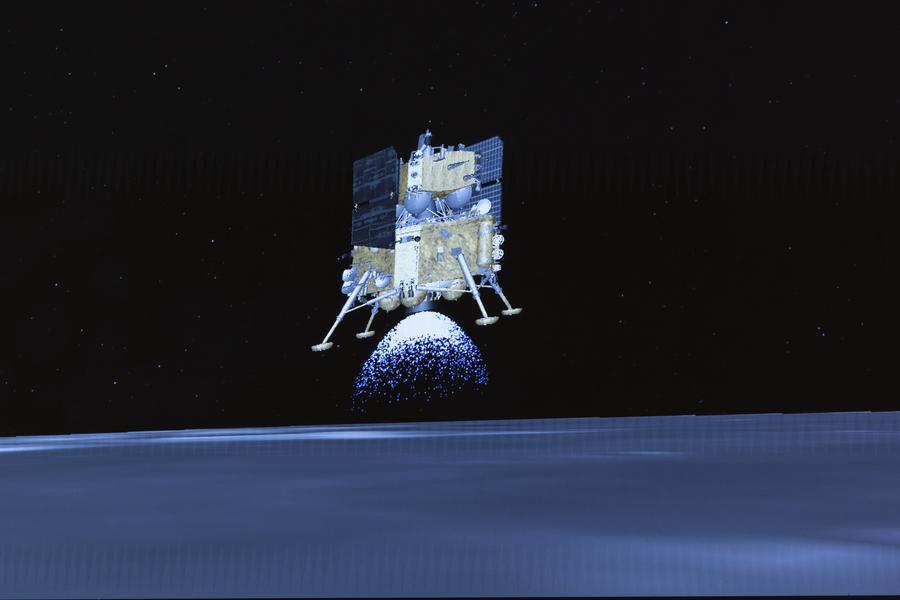
This image taken from video animation at Beijing Aerospace Control Center (BACC) on June 2, 2024 shows the lander-ascender combination of Chang'e-6 probe before landing on the far side of the moon. (Xinhua/Jin Liwang)
The lander-ascender combination began the powered descent at 6:09 a.m. The main engine with variable thrust was ignited, and the combination quickly adjusted its attitude and gradually approached the lunar surface.
During the descent, an autonomous visual obstacle avoidance system was used to automatically detect obstacles, with a visible light camera selecting a comparatively safe landing area based on the brightness and darkness of the lunar surface.
The combination then hovered about 100 meters above the safe landing area and used a laser 3D scanner to detect obstacles on the lunar surface to select the final landing site before a slow vertical descent. As the combination approached the lunar surface, it shut down the engine and touched down via free fall, protected by a cushioning system.
The Chang'e-6 mission is tasked with collecting and returning samples from the moon's far side, the first endeavor of its kind in the history of human lunar exploration.
It has achieved a breakthrough in the design and control technology of the lunar retrograde orbit and aims to realize key technologies of intelligent and rapid sampling, as well as takeoff and ascent from the far side of the moon.
PRECISE LANDING
According to Li Chunlai, deputy chief designer of the Chang'e-6 mission, the probe landed precisely at the designated area. This area is likely to be covered with a lot of basalt, which is very beneficial for geological research and can deliver significant scientific value.
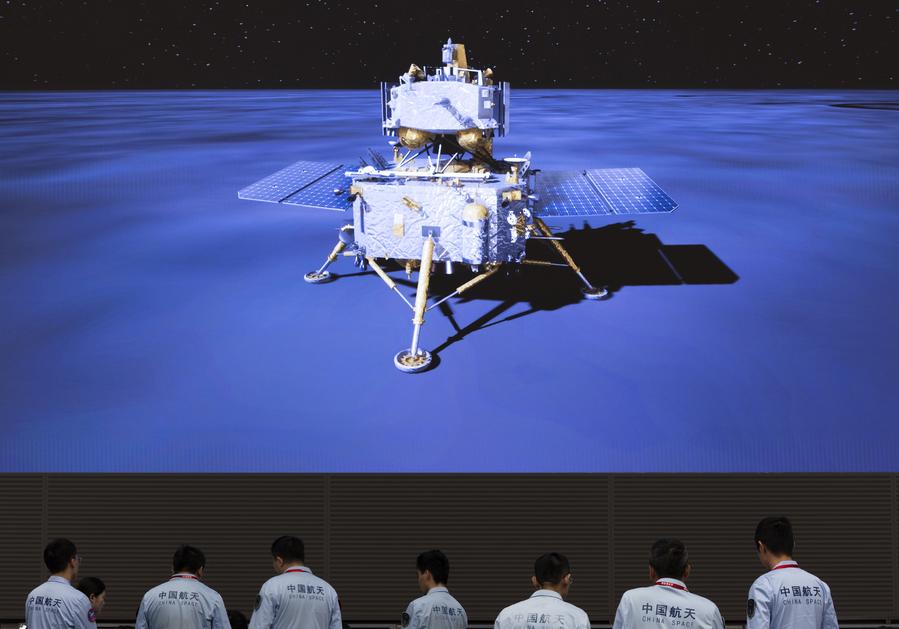
Technical personnel work at the BACC in Beijing, capital of China, June 2, 2024. (Xinhua/Jin Liwang)
The landing site is at an impact crater known as the Apollo Basin, located within the SPA Basin. The choice was made for the Apollo Basin's potential value of scientific exploration, as well as the conditions of the landing area, including communication and telemetry conditions and the flatness of the terrain, said Huang Hao, a space expert from the China Aerospace Science and Technology Corporation (CASC).
The colossal SPA Basin was formed by a celestial collision over 4 billion years ago and has a diameter of 2,500 kilometers, equivalent to the distance from Beijing to Hainan, and a depth of about 13 kilometers. It is the oldest and largest impact crater on the moon and in the solar system, and it may provide the earliest information available about the moon, according to scientists.
The huge impact of the celestial collision that formed the SPA Basin may have ejected materials from the depths of the moon. If such materials can be collected and returned to Earth for study, they would provide new insights into both the early impact history of the solar system and the geological evolution of the moon.
Huang added that the terrain on the far side of the moon is more rugged than the near side, with fewer continuous flat areas. However, the Apollo Basin is relatively flatter than other areas on the far side, which is conducive to landing.
The lander is equipped with multiple sensors, including microwave, laser and optical imaging sensors which can measure distance and speed, and identify obstacles on the lunar surface, Huang said.
To prevent interference to optical sensors by lunar dust during landing, the lander is also equipped with gamma-ray sensors to accurately measure the height through particle rays, ensuring that the engine can be shut down on time and the lander can touch down smoothly on the lunar surface, he added.
At the same time, the landing legs play their role as buffers, absorbing the impact energy of landing and ensuring the safety of the equipment on the lander.
AUTONOMOUS SAMPLING
Ge Ping, spokesperson for the Chang'e-6 mission, said he is very excited about the successful landing, but that this is not the time to relax, as the key task of the mission, sampling on the far side of the moon, is about to begin.
After the landing, the probe is scheduled to complete sampling within two days. It has adopted two methods of moon sampling, which include using a drill to collect subsurface samples and grabbing samples on the surface with a robotic arm.
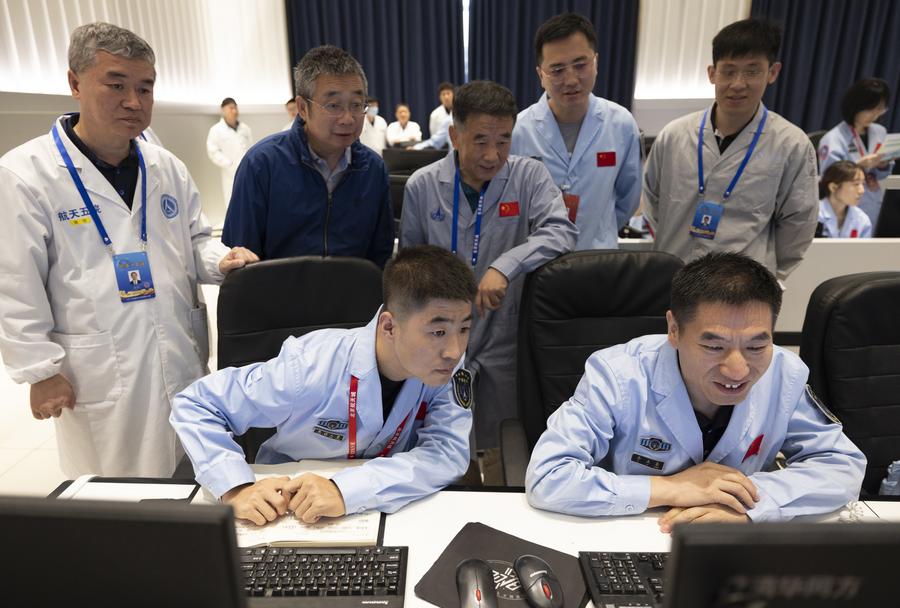
Technical personnel view data sent back by the lander-ascender combination of Chang'e-6 probe at the BACC in Beijing, capital of China, June 2, 2024. (Xinhua/Jin Liwang)
According to Jin Shengyi, another space expert from the CASC, the Chang'e-6 probe development team has built a simulation lab in advance to ensure a smooth sampling process.
The team members will set up a full-scale replica of the sampling area based on Chang'e-6 exploration results on the environment, rock distribution, and lunar soil conditions around the landing site. Using this simulation, they will develop and verify sampling strategies and equipment control procedures to ensure the accuracy of instructions.
Due to the moon's obstruction, the Earth-moon communication window period on the far side of the moon, even with the help of the Queqiao-2 relay satellite service, is still shorter than that on the near side. Therefore, the sampling time of Chang'e-6 will be reduced to about 14 hours, compared with the 22 hours used by its predecessor Chang'e-5.
To save time and improve efficiency, the development team has made the sampling process more intelligent, allowing Chang'e-6 to execute instructions and make judgments autonomously to reduce the Earth-moon interactions, Jin said.
For example, after the ground control sends an instruction, the probe will execute the corresponding program in multiple actions and then use the real-time data collected by the sensors to evaluate if the instruction is well executed, thus autonomously working in a closed loop without the ground control sending command on each action.
About 1,000 instructions were sent during the entire sampling process of Chang'e-5. For Chang'e-6, the number is expected to be reduced to about 400.
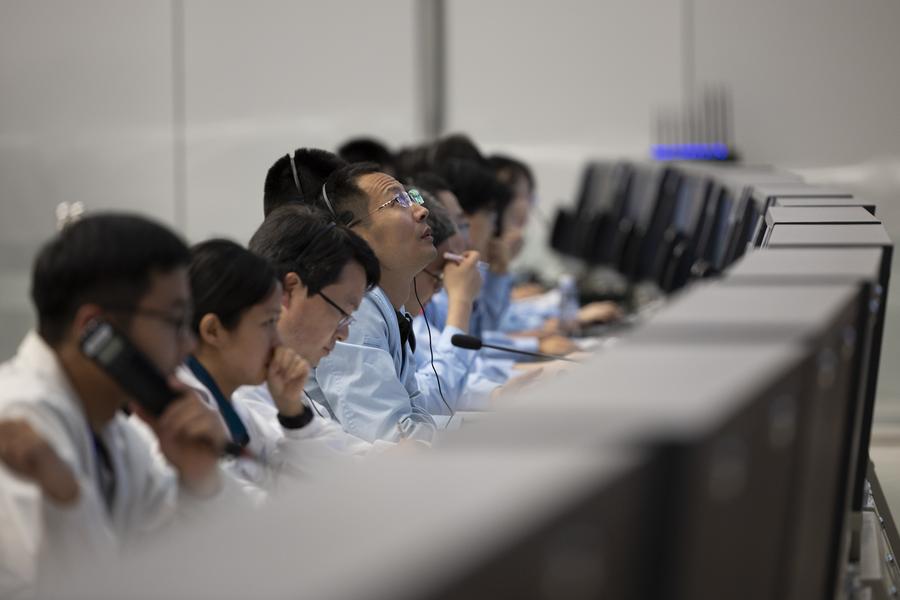
Technical personnel work at the BACC in Beijing, capital of China, June 2, 2024. (Xinhua/Jin Liwang)
Ge Ping, also deputy director of the CNSA's Lunar Exploration and Space Engineering Center, believes that through detailed analysis of the soil structure, physical properties and material composition of the Chang'e-6 samples, scientists will be able to deepen research on the genesis and evolutionary history of the moon, the origin of the solar system and so on, laying an improved foundation for later exploration missions to build on.
INT'L COOPERATION
Chang'e-6 is in good shape, and its three international payloads are in normal condition and will boot up and start operation, Ge said.
The three payloads Ge mentioned are installed on the lander, and consist of the lunar surface negative ion analyzer of the European Space Agency (ESA), France's lunar radon detector and Italy's laser retro-reflector.
The Chang'e-6 mission also carried a cube satellite from Pakistan that was aboard the orbiter. It separated from the orbiter on May 8 to carry out exploration activities, such as capturing images of the moon. China delivered data provided by the cube satellite to Pakistan on May 10.
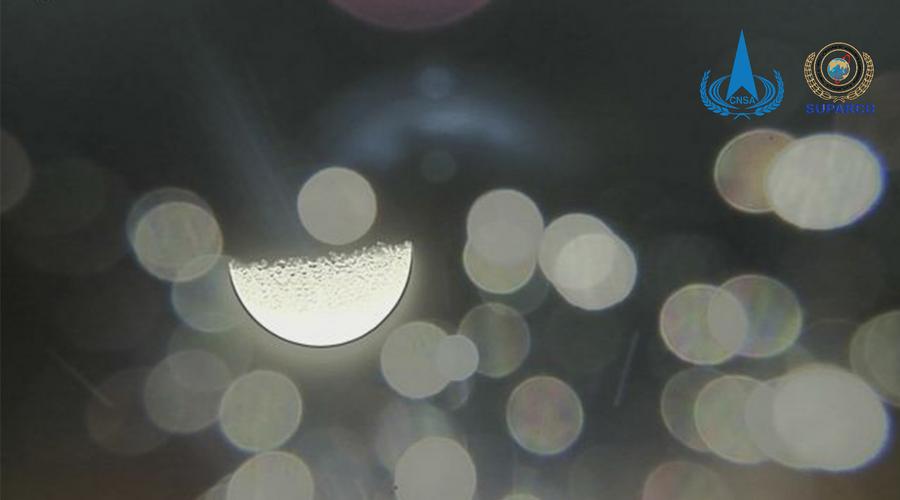
Chinese scientists will share scientific data generated by the mission with their international partners and carry out joint research, Ge said, noting that access to the Chang'e-6 samples will open for international applications at a later stage.
When watching the landing process at the National Astronomical Observatories, which fall under the Chinese Academy of Sciences, Pierre-Yves Meslin, principal investigator of France's lunar radon detector program, said he and his colleagues have been thinking about this moment for years.
"We were looking at the moon almost every night here in Beijing," he revealed, while adding that it is a very good idea to have international collaboration because scientific study requires a large community of scientists.
"It's a very impressive and ambitious mission. We are very pleased to be a part of it. The collaboration has gone very smoothly," said Neil Melville-Kenney, technical officer of the ESA's Negative Ions on the Lunar Surface project.
"I think space exploration encourages us to consider our planet as one and our people as one," he added. (Xinhua)


